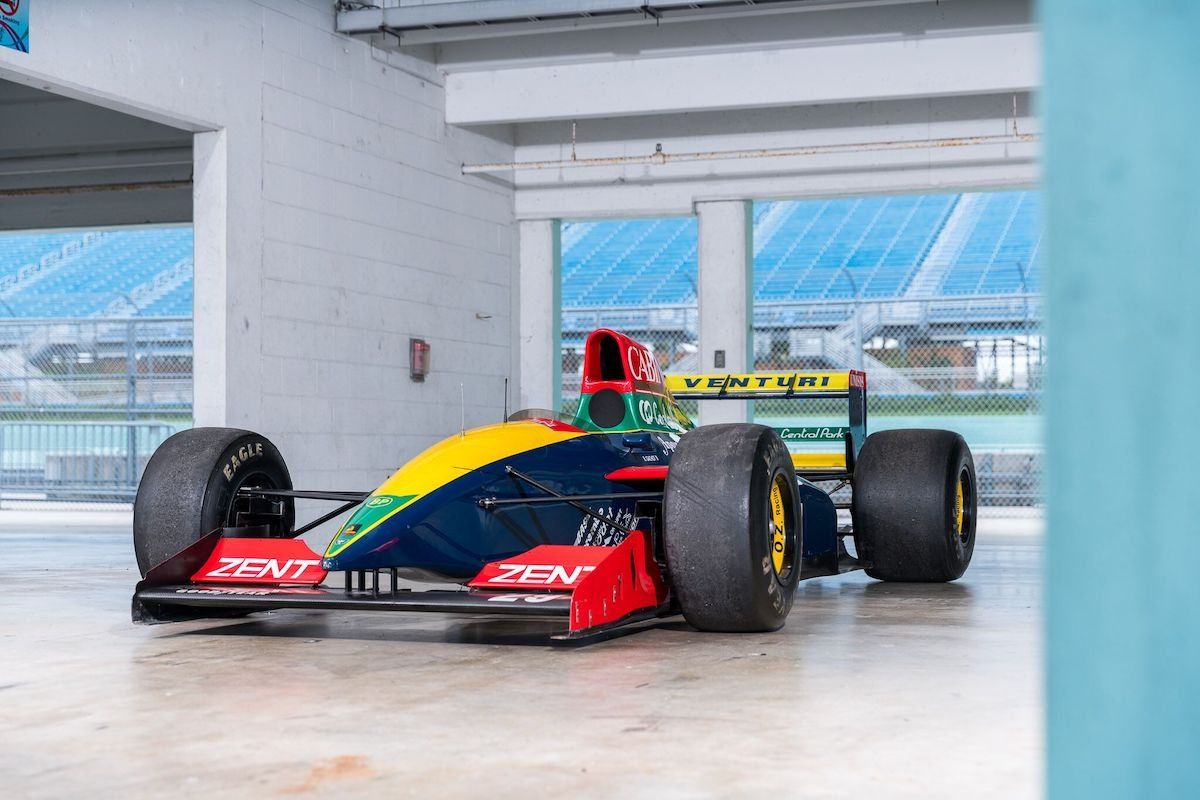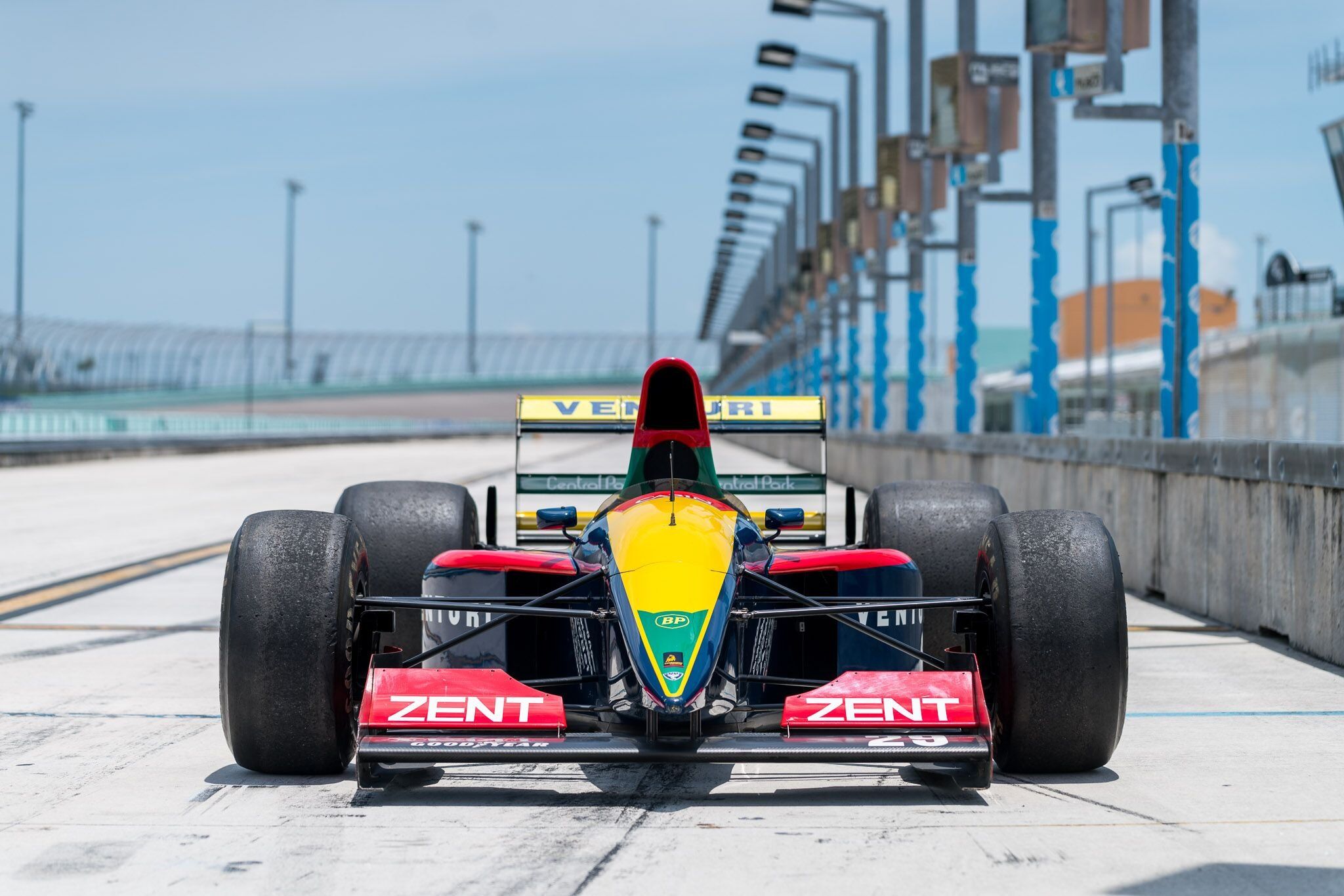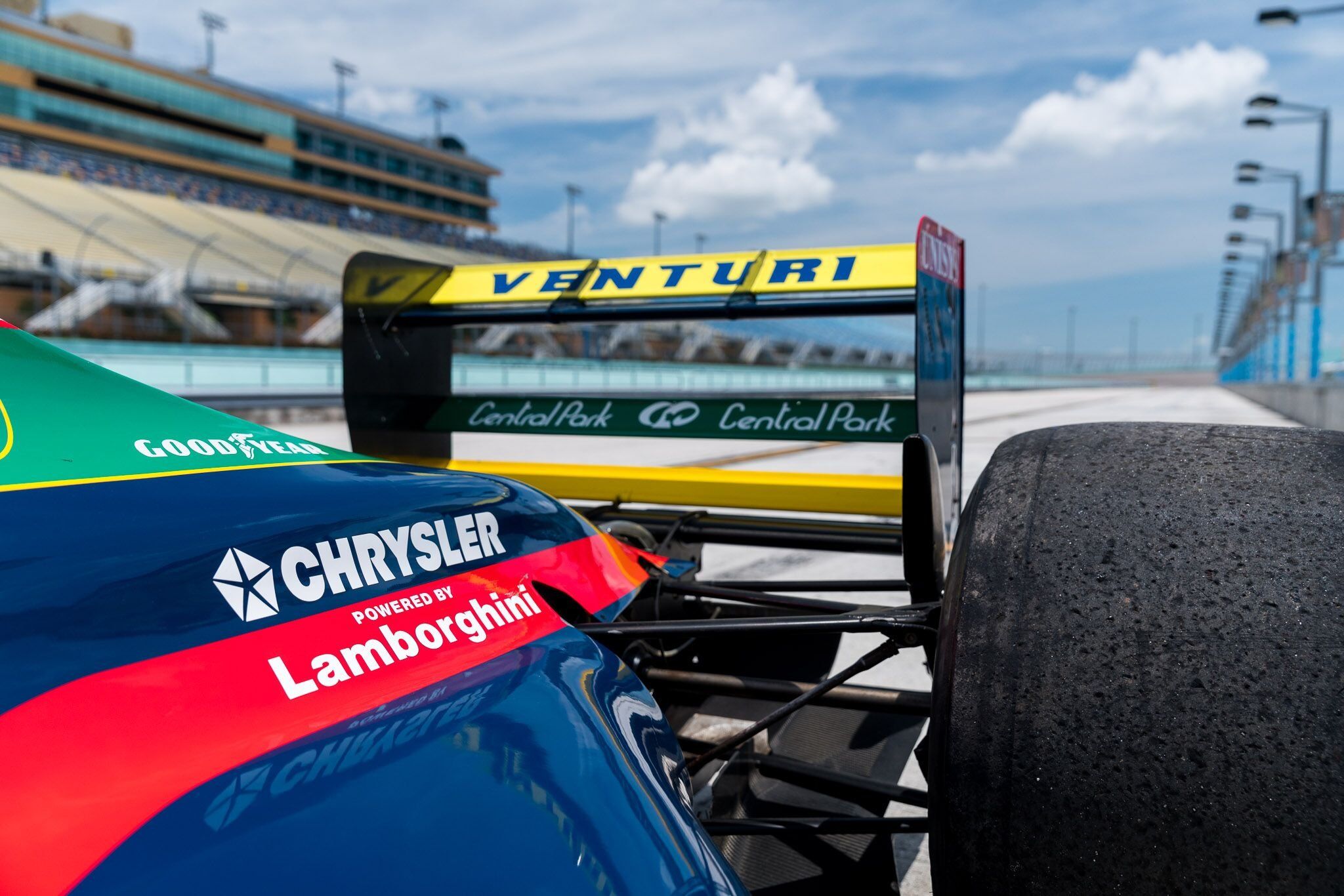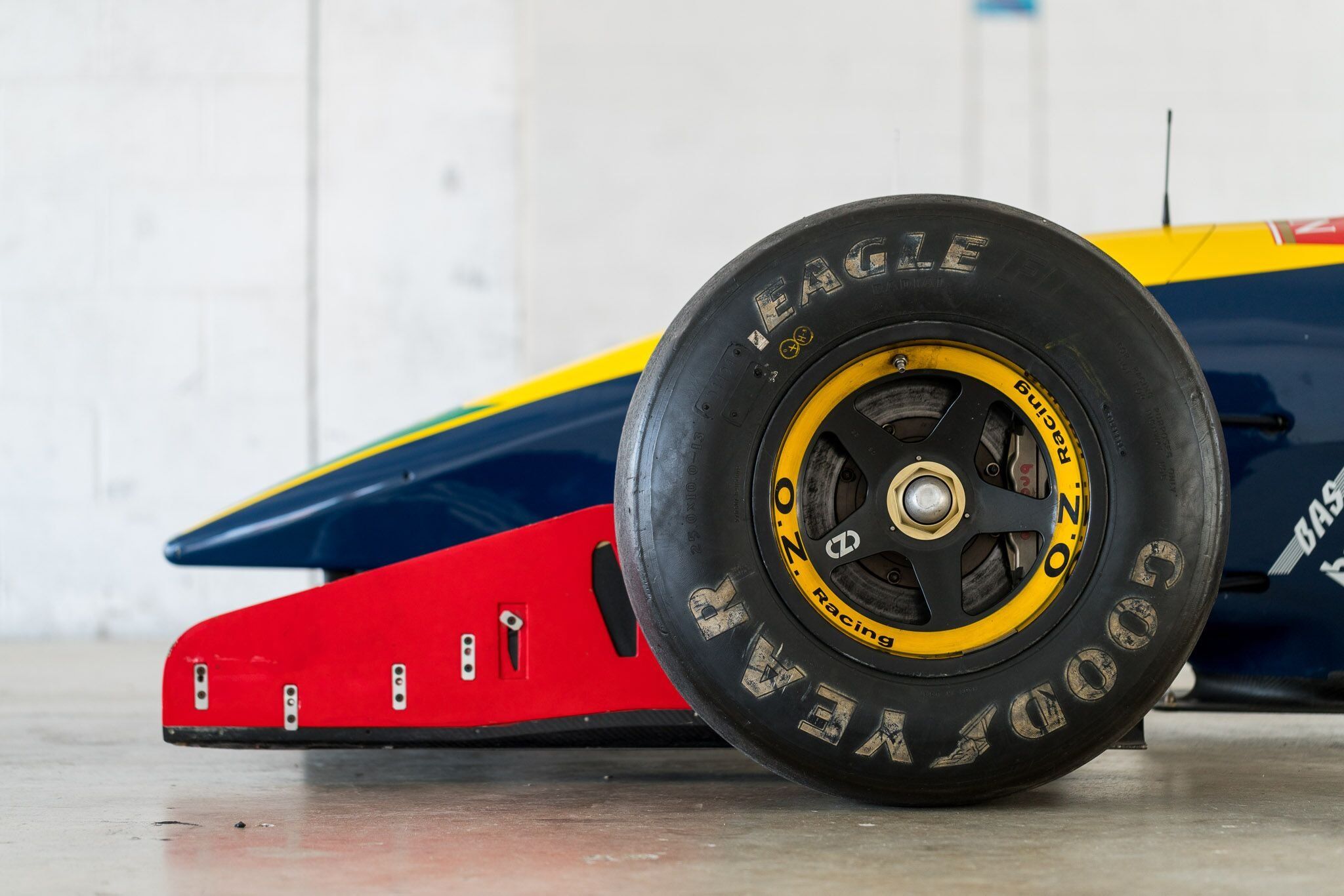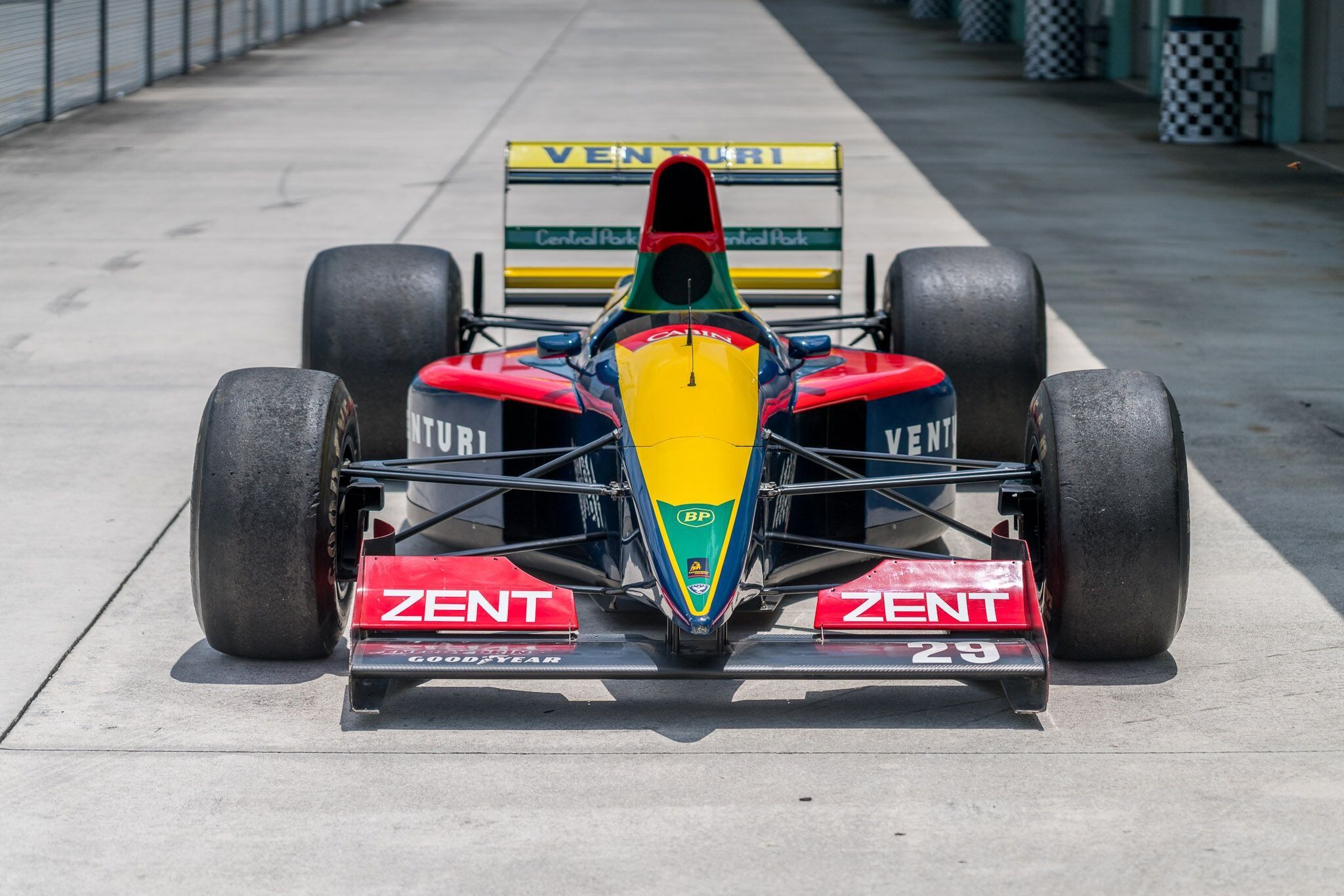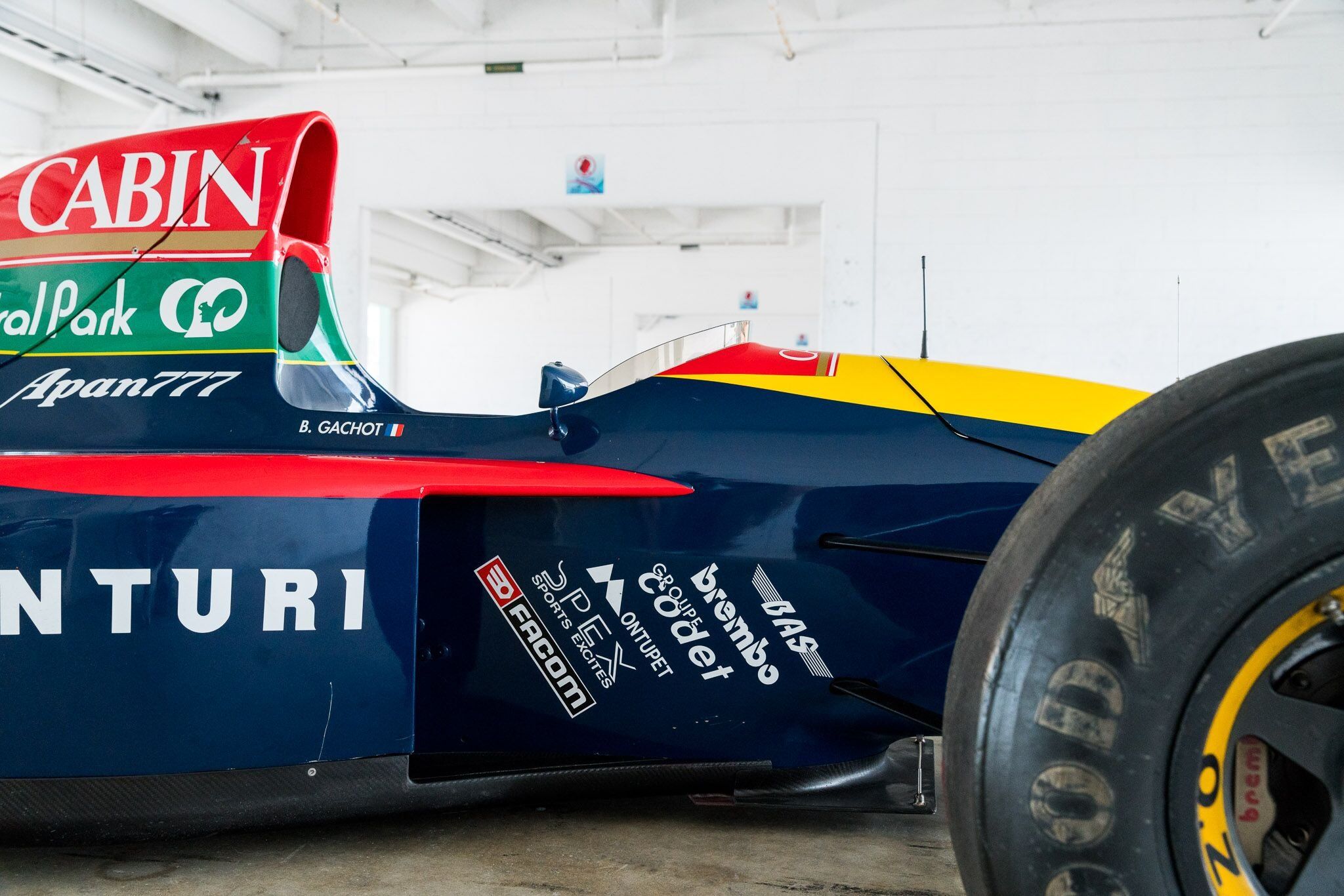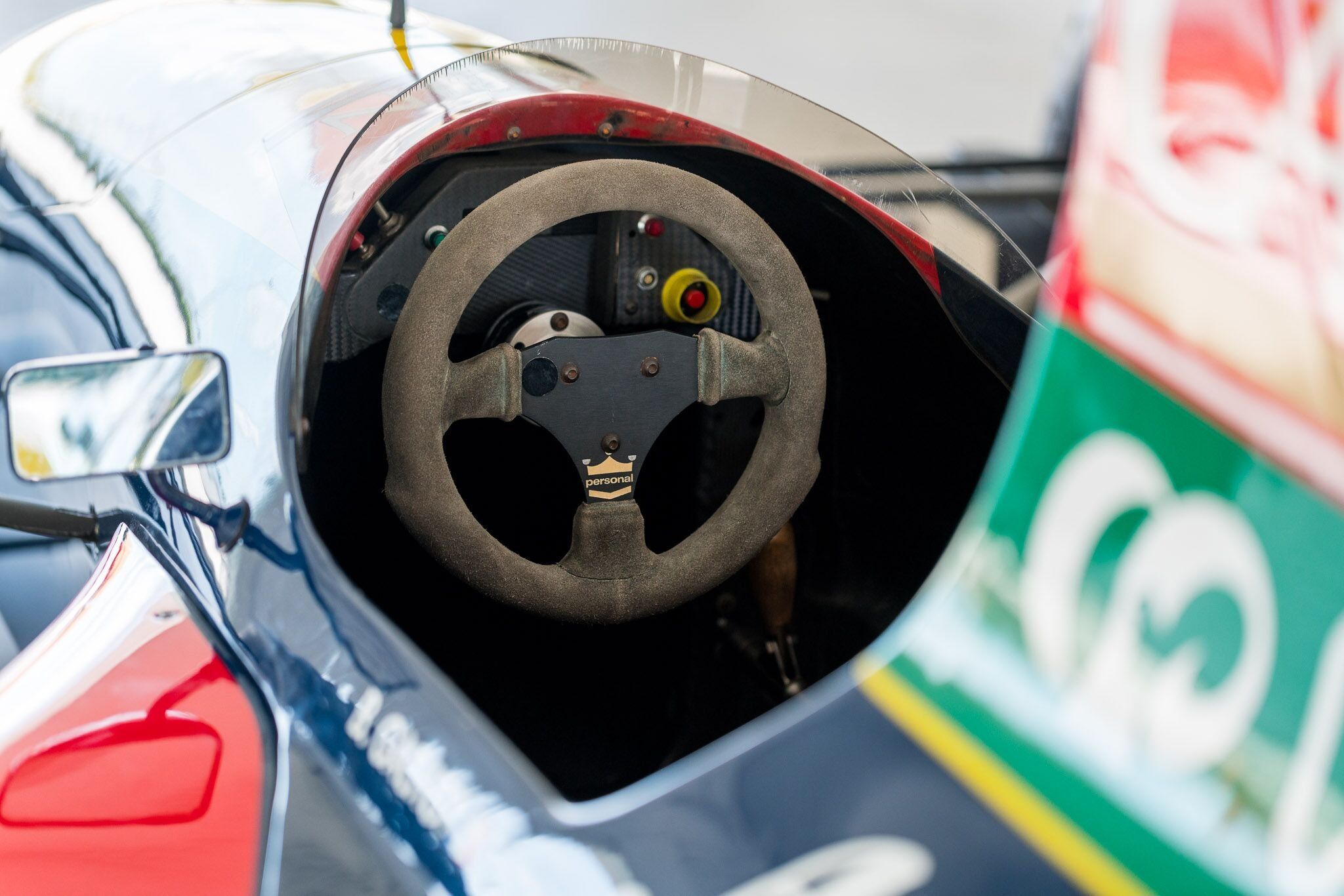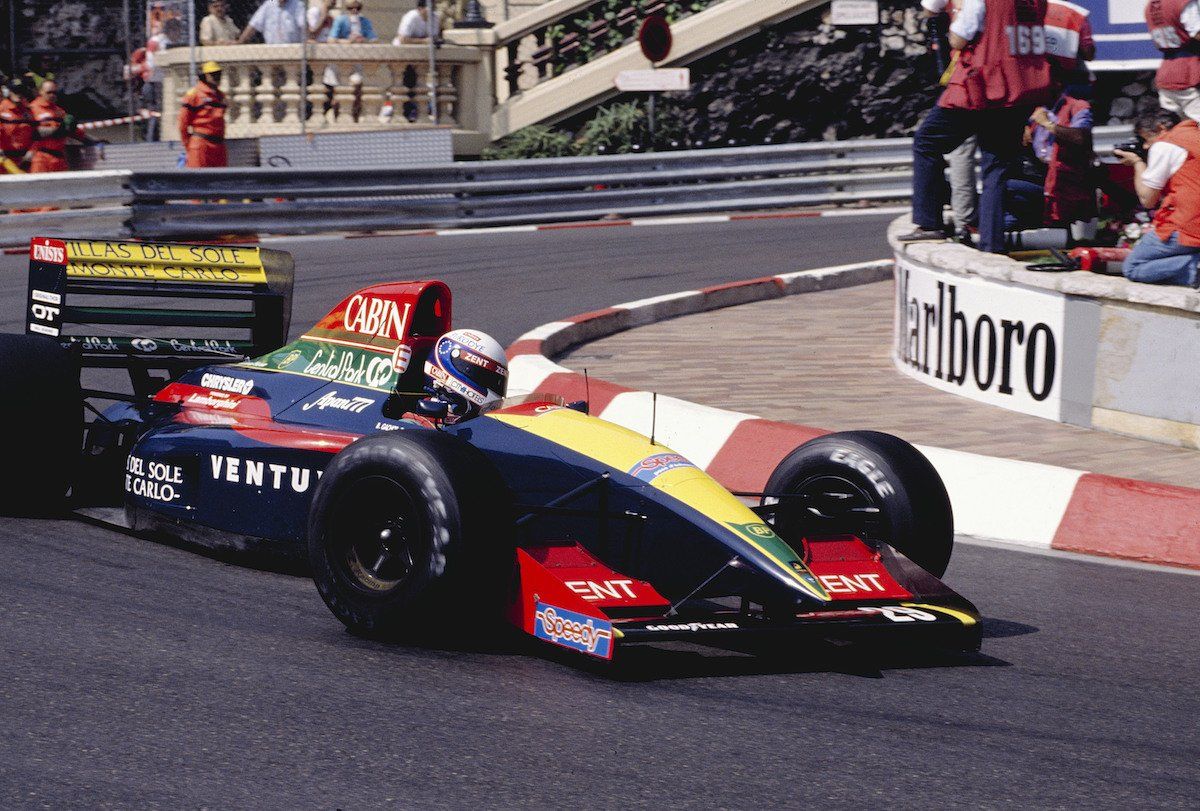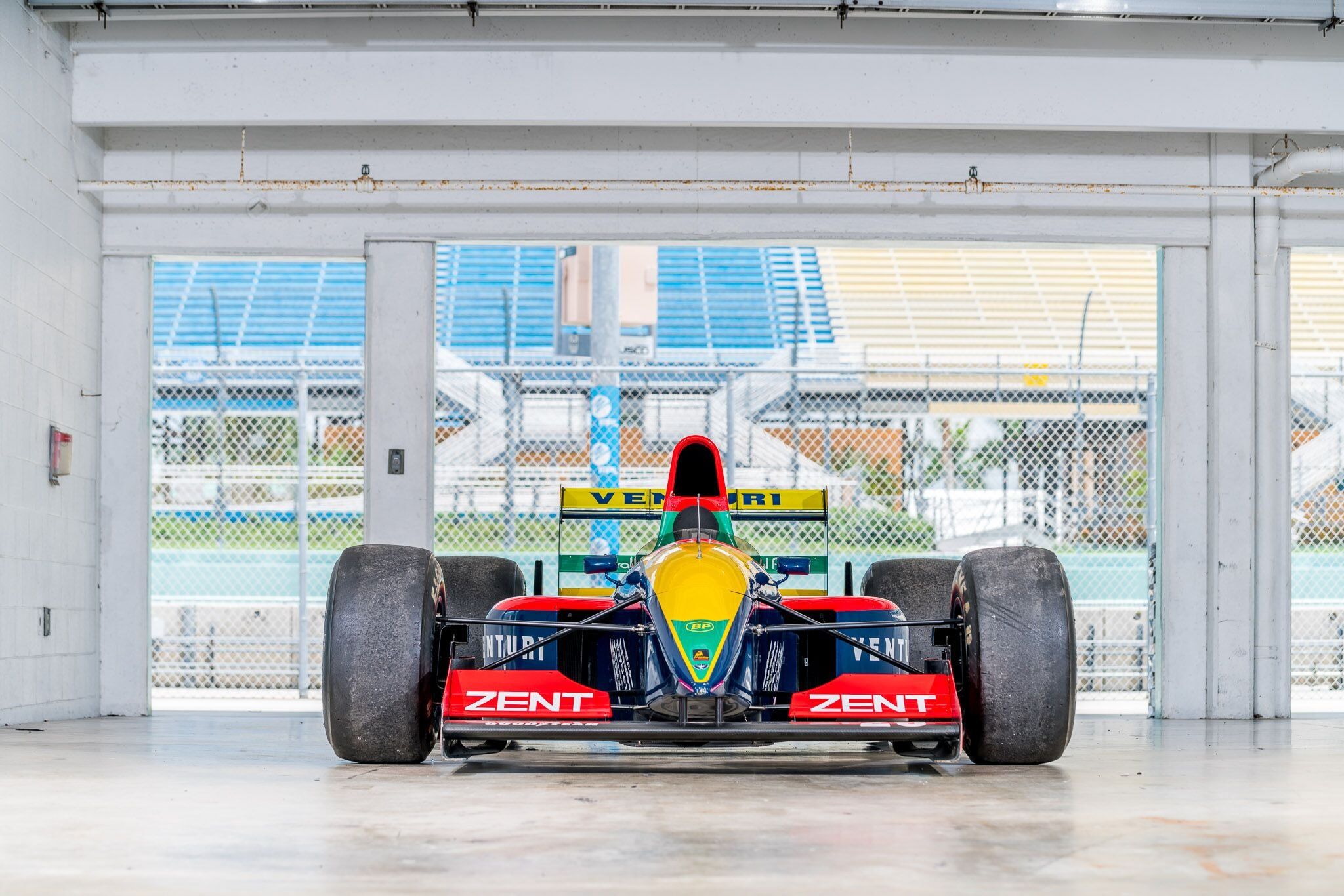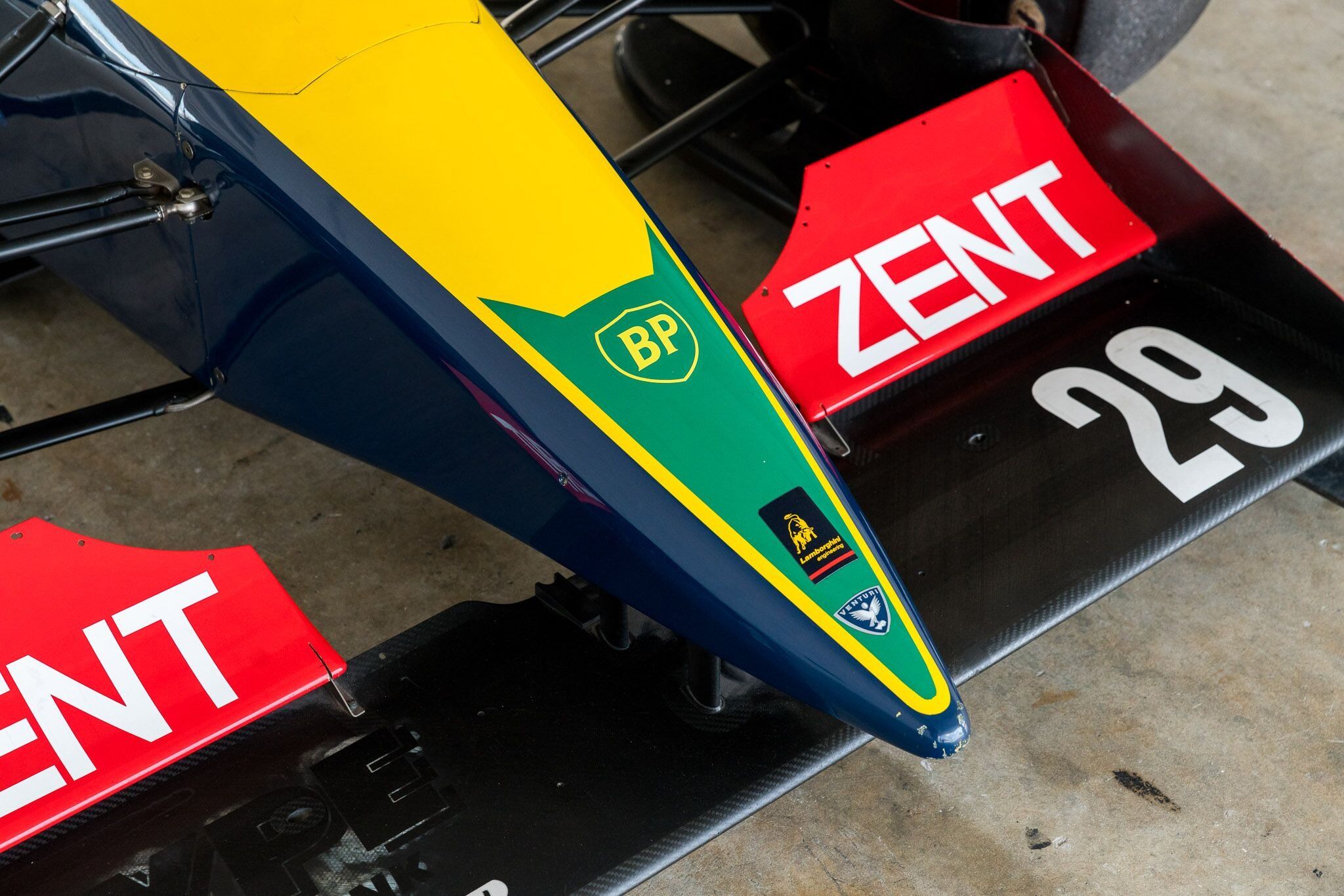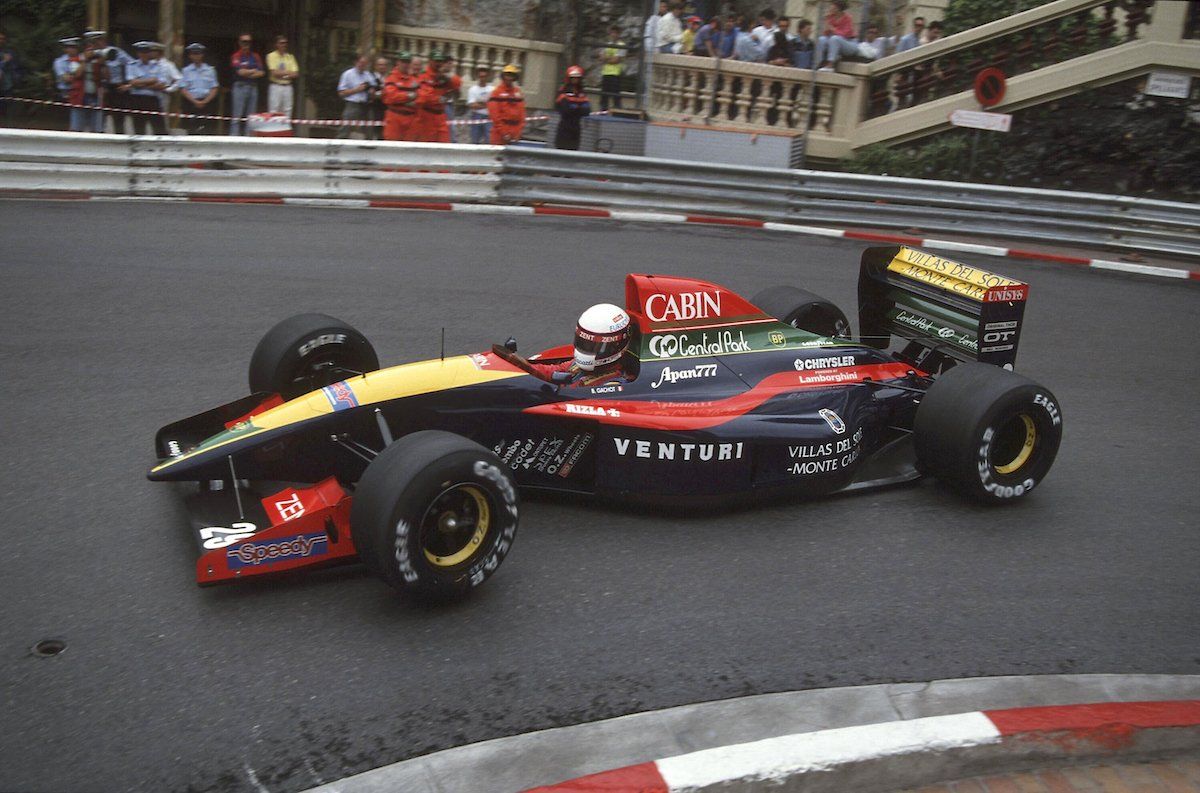The year is 1992 and the struggling Larrousse squad is at the bottom of the pecking order. With 16 teams vying to make the grid, Larrousse drivers Bertrand Gachot and Ukyo Katayama often realize there's no way their Robin Herd-designed car will make the cut and the days of Aguri Suzuki finishing on the podium for the team at Suzuka seem like a distant memory.
The only constant is the screaming 3.5-liter, naturally aspirated Lamborghini V-12 engine that revved to almost 20,000 rpm. You want a Lamborghini-engined car that can rev that high, don't you?
Far away and then some
In 1988, McLaren dominated the Formula 1 World Championship with its Honda-powered MP4/4 that won all but one of that year's Grand Prixs. It was a tour de force that Williams, Ferrari, and, more recently, Mercedes-AMG all tried to replicate and it came at a historically significant moment in F1's history: 1988 was the last year, until the modern era, of the turbocharged engines. In order to reduce power outputs and to attract more mainstream automakers, the FIA decided to introduce 3.5-liter naturally aspirated engines for 1989 and it worked, at least for a while.
At its peak, the 3.5-liter N/A formula was reading like the best fairy tale in motorsport history: no less than 16 teams were trying to make the cut for each Grand Prix and almost 10 engine manufacturers got involved, a lot when you consider that the F1 cars that align on the grid this year are powered by either Ferrari, Honda, or Mercedes-Benz.
Among those merely there to make up the numbers was Lamborghini whose engines were powering the Minardi and Larrousse outfits for 1992. The latter is in our focus today because one of the cars run by the team in '92 is now up for grabs for the price of a brand-new Ferrari 812 Superfast with $50,000-worth of options. That's not much when you consider that Mansell's Williams-Renault that grabbed that year's title sold for over $3 million. But Mansell would've never become World Drivers' Champion in the Larrousse...
Humble beginnings led to nothing
The Larrousse team, as the name suggests, was established by retired race driver Gerard Larrousse and Didier Calmels. Larrousse, a two-time winner of the 24 Hours of Le Mans with Matra in the '70s, began his assault on F1 by commissioning Lola to build a bespoke chassis for him.
The T87/30 was designed by Eric Broadley and Ralph Bellamy and was powered by a known quantity in Ford-Cosworth's DFZ V-8 engine. Philippe Alliot ran the entire season for the team scoring three points after finishing sixth on three separate occasions. Yannick Dalmas joined him in a second car and even finished fifth in the year-ending Australian Grand Prix but the future Le Mans winner was ineligible for points.
The team's second full season of competition was more complicated with the team failing to score even one point despite trying out Pierre-Henri Raphanel and Aguri Suzuki towards the end of the year. In the off-season, many things changed inside Larrousse's small team as Calmels was imprisoned after murdering his wife. In spite of that, there was enough money still in the bank to bring ex-Renault Chief Engineer Gerard Ducarouge onboard and also sign an engine deal with Lamborghini for 1989.
The supercar maker, at the time under the ownership of Chrysler, had been developing an F1 engine as part of Chrysler's plan to bring Lamborghini into motor racing. While this was never the intention of company founder Ferruccio Lamborghini, Chrysler's top brass believed that it was through racing that Lamborghini could prove its technical prowess and, of course, F1 was at the peak of the pyramid and thus became Lamborghini's target.
The engine proved overweight and the power wasn't there either which resulted in Yannick Dalmas failing to qualify for the first GP of the season. A retirement followed in the second and then four more DNQs heralded his exit from the team as he'd also fallen ill. Eric Bernard and Michele Alboreto both tried to fill Dalmas' shoes but could do no better in a car that was barely fast enough to make it onto the grid and barely reliable enough to finish one in every five races. Having said that, things were looking a bit less grim ahead of 1990. Alliot somehow soldiered on to score one point in Mexico and Japan's Espo Corporation bankrolled the full-time introduction of Aguri Suzuki into the team (as well as some extra funds).
Eric Bernard was the more constant finisher for the team in 1990 and, when he scored a fourth-place finish in Germany, people began to raise their eyebrows. The positive result was followed by an even better one towards the tail-end of the season when Suzuki finished third (!) in front of his home crowd at Suzuka in a high-attrition race. With 11 points in the bag, Larrousse was sixth in that year's Constructors' standings. That is, until the FIA took their points away for allegedly "false declaration" about the design of the chassis - Larrousse said it was a chassis designed in-house when, in fact, both the LC89 and LC90 were still designed by Lola in England.
In spite of that lone podium finish, Espo pulled out of the team soon after the 1991 season had began meaning that Larrousse scrambled to find some money to pay for the Ford-Cosworth engines that Brian Hart's organization was supplying. This was especially hard for the French team as, under French law, tobacco sponsorship was banned that year and, in the end, Hart never received his money from Larrousse and nor did Lola.
The arrival of Venturi
With both its chassis and engine provider unhappy and unpaid, Larrousse was in an unenviable position come 1992. This is also because the tea lost one of its drivers, Eric Bernard, who broke his leg after a nightmare shunt at Suzuka. To add insult to injury, the engine provider the team struck a deal with for 1992 was, again, Lamborghini which was coming off a similarly frustrating experience as an entrant.
You see, Lamborghini was left with no one to sell engines to at the end of 1990 and, somehow, decided that the best way to continue in the sport is by entering a team under its own name (well, actually, it was entered as Modena F1) and it proved disastrous. Chrysler didn't put its money where its mouth was and failed to help Lamborghini in developing the V-12 engine which was a bit of a vibrating mess as exemplified by the state of the unit when Team Larrousse first scored a point in the World Championship back in '89. "In the closing stages Gerard Larrousse’s heart was in his mouth as Alliot’s Chrysler-Lamborghini V-12 hiccoughed and cut out twice, but it kept going to the end," reads the period Motor Sport Magazine report. Not too pleasant, eh?
But there weren't too many engine manufacturers willing to help a team that was now notorious throughout the paddock for not paying its parts providers and that's why the return to Lamborghini took place. It all happened amid Venturi's 65% buy-in that helped the team stay (moderately) afloat. Venturi, the French sports car maker was keener on developing its single-make series for gentleman drivers under the direction of Stephane Ratel but F1 seemed like an interesting distraction at the time that could garner some attention to Venturi's other exploits.
Bertrand Gachot and Ukyo Katayama were bestowed with the honor to drive the Robin Herd-designed Venturi LC92 and they would soon realize the Lamborghini engine was an unreliable piece of work - as did Ligier's, Lotus', and Minardi's drivers in those days. "All noise and no go," is how Derek Warwick described the Lamborghini engine in a 2004 interview.
The car you see here, chassis #01, was at the core of the team's only notable performance in 1992. As it often happened back then, the scene was Monaco and it also rained that weekend which helped in equalizing things even more. Bertrand Gachot, famous for being imprisoned the year before after punching a cabbie in London (which afforded one Michael Schumacher the chance to make his F1 debut in Gachot's car at Spa), drove the LC92 to a sixth-place finish which was amazing when you consider that Bertrand only finished three other GPs that year.
At the end of the season, following a run of four consecutive DNFs, Larrousse gifted this car to Gachot as it couldn't pay him any other way. For some reason, Gachot didn't flip the Larrousse-Venturi-Lamborghini right away and, instead, kept it for years, even displaying it in HYPE livery to promote his energy drink brand.
Last year, the car was acquired from the man that got the car off of Gachot's back. While neat from an aesthetic point of view, the car wasn't in running order and, as you'd expect, finding a Lamborghini 3512 V-12 engine to bring it back to life is no mean feat but there's a plan to have the car sent back to Sant'Agata Bolognese for Lamborghini's own Polo Storico department to restore. In other words, it is 'only' $385,000 because you can't get out and drive it.
At least not yet. And anyway, by the time it will be drivable again, the bills will have piled up quite a bit - we're thinking this is a $200,000 at the very least given how rare the engine is. Then again, where else are you going to find a car powered by the engine that almost powered the 1994 McLaren F1 car?

